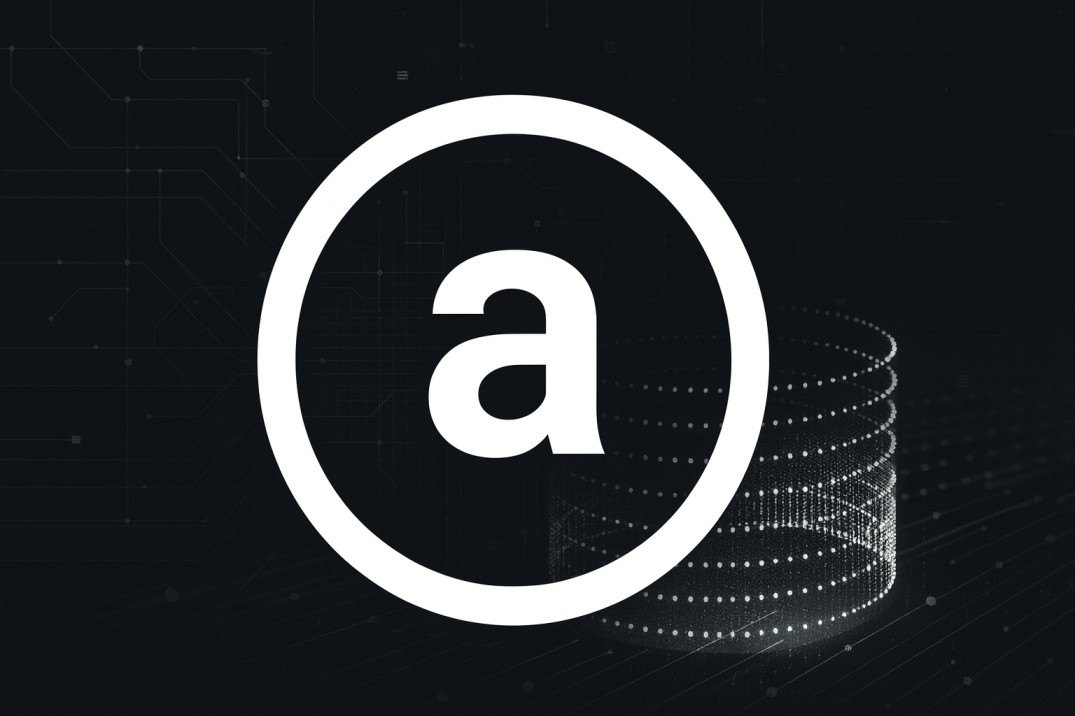TLDR: Arweave (AR) at a Glance
- What it is: A decentralized storage network for permanent data storage, launched in 2017.
- Core tech: Built on blockweave with Proof-of-Access consensus, incentivizing miners to store historical data.
- Founders: Sam Williams and William Jones at the University of Kent.
- Permaweb: A permanent, censorship-resistant layer of the internet for apps and data.
- Token (AR): Used for storage fees, mining rewards, governance, and developer incentives.
- Unique features: Profit Sharing Tokens (PSTs), permanent data, DAO governance.
- Funding: Backed by Andreessen Horowitz, Union Square Ventures, Coinbase Ventures, and others.
- Challenges: Scalability, upfront costs, competition, and regulatory risks.
- Why it matters: Provides a collectively owned, permanent hard drive for humanity's knowledge.
In an age where data is the most valuable resource, the question of how we preserve information permanently is more important than ever. Traditional cloud providers like Amazon, Google, or Microsoft allow us to store data but at a recurring cost - and always with the possibility of deletion, censorship, or corporate shutdown. What if there were a way to store data once and forever?
This is the vision behind Arweave (AR), a blockchain-inspired decentralized storage network that aims to preserve humanity's knowledge indefinitely. Through its unique technology called blockweave and its flagship permaweb, Arweave offers permanent, decentralized, and censorship-resistant data storage.
In this article, we'll explore Arweave in detail:
- What Arweave is and how it works
- The founders and origins of the project
- Its unique blockweave and proof-of-access consensus
- Tokenomics of AR
- Ecosystem growth and funding
- Challenges, risks, and future outlook
What is Arweave (AR)?

At its core, Arweave is a decentralized storage network designed to store information permanently. Unlike conventional cloud providers that rely on subscription fees, Arweave uses an endowment model, where users pay a one-time fee to store data "forever."
This data is then hosted across a distributed network of nodes, ensuring that it remains available as long as the network exists. The storage forms part of what's called the permaweb - a permanent, decentralized web of information, applications, and history. This makes Arweave a digital time capsule, where knowledge and applications can outlive the organizations or individuals who create them.
Who Founded Arweave?
Arweave was founded in 2017 by Sam Williams and William Jones, two Ph.D. candidates at the University of Kent in the UK.
- Sam Williams: Specialized in decentralized systems and developed an operating system called HydrOS during his studies. He later dropped out of academia to focus on Arweave full-time.
- William Jones: Focused on graph theory and neural networks but left the project in 2018 to complete his Ph.D.
Williams has shared that the idea for Arweave came to him while hiking in Scotland, where he envisioned a permanent way to store information. Although initially centralized, Arweave moved toward decentralization with the creation of a DAO in January 2020, giving community members control over the ecosystem's future.
How Does Arweave Work?

1. Blockweave: A Different Kind of Blockchain
Traditional blockchains like Bitcoin store every block linearly - each block references the one before it. Arweave introduces blockweave, where each block links not just to the previous block but also to a random earlier block.
This design creates a consensus mechanism called Proof-of-Access (PoA):
- To add a new block, miners must prove they can access both the previous block and a randomly selected earlier block.
- This incentivizes miners to store large portions of the network's data, since they never know which block they'll need.
As a result, Arweave achieves permanent, distributed storage without requiring every miner to store the entire chain.
2. Proof-of-Access (PoA)
Proof-of-Access is a modified form of Proof-of-Work. It requires miners not just to perform computational work but also to demonstrate access to historical data.
This has two benefits:
- Data persistence: Miners are motivated to hold onto old data.
- Security: Random verification prevents selective pruning or deletion of files.
The system was initially powered by the RandomX algorithm, which was independently audited by four cybersecurity firms: Trail of Bits, Kudelski Security, X41 D-Sec, and QuarksLab in 2019. Later, Arweave developed SPoRA (Succinct Proofs of Random Access), which was audited by NCC Group in 2020.
3. The Permaweb
The permaweb is Arweave's most well-known product: a permanent, decentralized web layer where applications, documents, and websites can live forever. Unlike the traditional web, where websites may disappear if hosting companies shut down or domains expire, permaweb apps are stored permanently on Arweave. This enables:
- Censorship resistance
- Neutral hosting of web apps
- Preservation of historical data
Today, the permaweb hosts a wide range of applications, from decentralized publishing tools to NFT platforms and archival projects.
4. Developer Incentives: Profit Sharing Tokens (PSTs)
In 2020, Arweave introduced Profit Sharing Tokens (PSTs). These tokens allow developers to earn a share of transaction fees generated by their applications on the permaweb. For example, if a developer launches a permaweb-based dApp that gains users, the PST holders receive dividends in AR tokens, creating a sustainable incentive structure for building the ecosystem.
Additionally, Arweave runs programs like Boost, which provides startups with free storage, funding, and access to industry mentors.
Tokenomics of AR
The native token of Arweave is AR, which plays multiple roles:
- Storage Fees: Users pay AR tokens to store data permanently.
- Mining Rewards: Miners earn AR for providing storage and securing the network.
- 3. Profit Sharing: Developers with PSTs receive rewards denominated in AR.
- 4. Governance: Community-driven decision-making involves AR as the economic backbone.
The maximum supply of AR is 66 million tokens, with around 65.65 million in circulation as of mid 2025. Tokens are distributed across early investors, community incentives, and mining rewards.
Ecosystem and Adoption
Arweave's ecosystem has expanded significantly since launch:
- Funding: In 2019 and 2020, Arweave secured funding from Andreessen Horowitz, Union Square Ventures, Coinbase Ventures, and Multicoin Capital, totaling over $13 million.
- Partnerships: Arweave has collaborated with organizations like The Internet Archive and other Web3 projects for decentralized storage.
- dApps and Tools: Over 500 applications have been deployed on the permaweb, ranging from decentralized publishing platforms to DeFi dashboards and NFT storage solutions.
Arweave's Boost program and incubators continue to attract new developers, further strengthening adoption.
How is the Arweave Network Secured?
Security in Arweave is provided by its Proof-of-Access consensus combined with blockweave architecture.
- Distributed Storage: Data is stored across many nodes, reducing the risk of single points of failure.
- Proof-of-Access: Ensures miners keep old data accessible.
- Independent Audits: Mining algorithms like RandomX and SPoRA have been professionally audited for security.
- Decentralized Governance: The DAO structure ensures that no single party can unilaterally change protocol rules.
This combination allows Arweave to deliver on its promise of tamper-proof, permanent storage.
Challenges and Risks
Like any blockchain project, Arweave faces hurdles:
- Scalability of Permanent Storage: As data volumes grow, ensuring indefinite storage across decentralized nodes remains a challenge.
- Adoption vs. Cost: Users must pay upfront to store data forever, which can be higher than traditional subscription models.
- Centralization Risks: Although decentralized, storage concentration among a few miners could pose risks.
- Competition: Arweave competes with other decentralized storage projects like Filecoin, Storj, and Sia.
- Regulatory Risks: Governments may challenge permanent data storage, particularly for sensitive or controversial content.
The Future of Arweave
Arweave's success will hinge on:
- Scaling permaweb adoption through user-friendly apps.
- Expanding partnerships with major Web3 projects and enterprises.
- Balancing decentralization with storage demands.
- Evolving tokenomics to ensure sustainability.
If it continues to attract developers and funding, Arweave could become the go-to solution for permanent, censorship-resistant storage in the decentralized internet.
Final Thoughts
Arweave (AR) is one of the most innovative projects in Web3, with a bold mission: to create a permanent, decentralized archive of human knowledge. By combining blockweave technology, Proof-of-Access consensus, and an incentive structure for developers, it addresses one of the internet's biggest flaws: the impermanence of digital data.
While challenges remain, Arweave has already built a strong foundation with its permaweb, partnerships, and ecosystem growth. If successful, it could redefine how we think about data, history, and permanence in the digital age.











